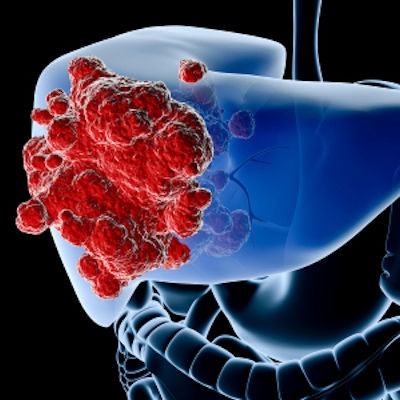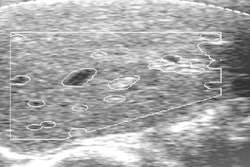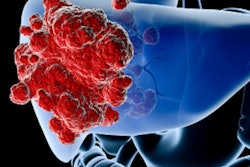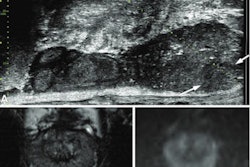
Liver ultrasound findings considered to be ultrasonic subthreshold observations are unlikely to progress or become hepatocellular carcinoma (HCC), according to research published June 15 in the American Journal of Roentgenology.
A team led by Dr. Justin Tse from Stanford University found that at two-year ultrasound follow-up, all findings initially categorized as subthreshold observations on the Ultrasound Liver Imaging Reporting and Data System (US LI-RADS) either showed no correlation or were stable.
"This tells us that subcentimeter observations may not be a precursor to liver cancer and may not be as clinically significant as previously thought," Tse told AuntMinnie.com.
HCC is the fourth most common cause of cancer death worldwide and has a five-year survival rate of less than 20%. This makes screening and surveillance in high-risk patients important to help with early-stage diagnosis, treatment, and decreasing mortality. Ultrasound is the imaging modality typically used for surveillance.
The American College of Radiology's US LI-RADS version 2017 gives three categories for ultrasonic findings on HCC surveillance that also inform follow-up strategies. A category of US-1 negative means no observations and a recommendation to repeat the surveillance ultrasound in six months. Patients with US-2 subthreshold observations undergo repeat surveillance ultrasound in three to six months and return to routine surveillance if the observation shows no growth for two years. Patients with US-3 positive findings meanwhile are recommended to undergo multiphasic CT, MRI, or contrast-enhanced ultrasound to further characterize findings.
The researchers wrote that outcomes of US-2 observations are not well known and that follow-up is based on expert opinion. Tse and colleagues wanted to find out the outcomes of patients with US-2 observations detected on ultrasound exams performed for HCC screening and surveillance.
They looked at retrospective data from 175 patients with a median age of 59 years. Out of these, 70 were women and 105 were men. All patients included were deemed to have a high risk for HCC with US-2 observations. Also, a total of 111 patients had follow-up ultrasound at or more than two years, while 106 had follow-up CT or MRI (79 before two years, 27 after two years).
The team found that 173 patient observations were either stable on follow-up ultrasound (n = 68), showed no correlation on follow-up ultrasound, CT, or MRI (n = 88), or were classified as LR-1 or LR-2 on CT or MRI (n = 17). The other two observations meanwhile were classified as LR-3 on CT or MRI.
Tse and colleagues also found that no observations progressed to US-3 on follow-up ultrasound or were classified as LR-4 or higher on CT or MRI. They added that a correlation was observed in 25 of the 106 follow-up CT or MRI exams.
The authors wrote that eight patients developed HCC at a median of two years after initial US-2 observation detection. In three patients who underwent a liver transplant, the removed livers showed no dysplastic nodule or HCC.
The researchers wrote that future iterations of clinical guidelines could suggest that a US-2 observation that is stable on a follow-up ultrasound that's performed earlier than two years can be reclassified as US-1. This would also not need continued short-interval follow-up examinations for a full two-year interval.
Tse told AuntMinnie.com that the team hopes to work with other groups to validate their results in a larger setting.




















